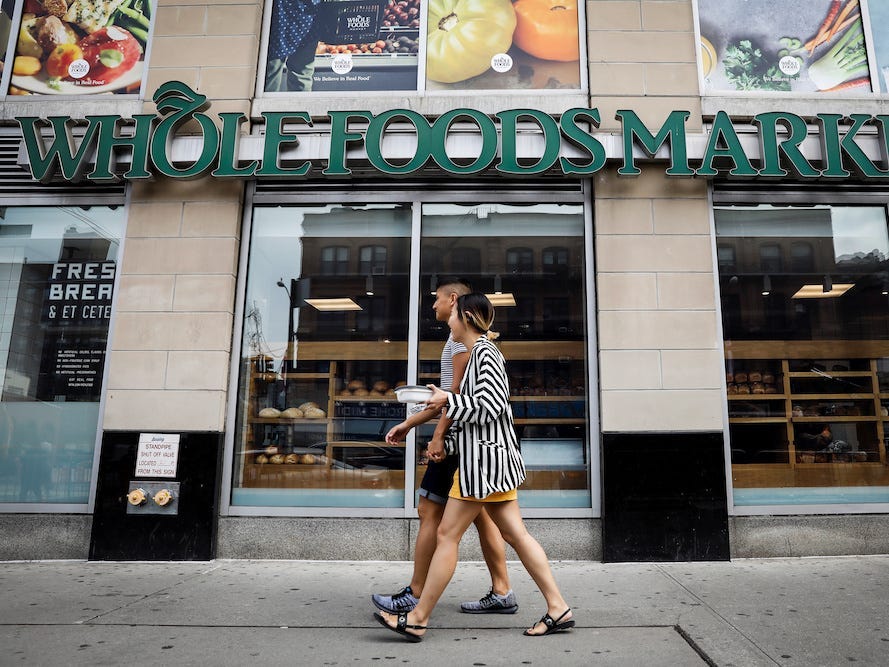
- Whole Foods had 21% fewer visitors across its stores on October 4 compared to the same day last year, according to data by placer.ai.
- Shopper traffic is bouncing back much faster at other grocers – it was only down 2% at Kroger’s.
- Part of this is because Whole Foods normally gets a lot of lunchtime trade from office workers, who are now working from home, a spokesperson said.
- Sales of packaged goods, like sandwiches and salads, has fallen 75%.
- A Whole Foods spokesperson told Business Insider the company “is healthy and continues to grow,” and has opened 10 new stores in 2020.
- Visit Business Insider’s homepage for more stories.
For every five in-store shoppers Whole Foods Markets had last October, it now only has four, new data suggests.
The supermarket chain had 21% fewer visitors across its stores on October 4 compared to the same day last year, according to data by placer.ai, which records retail foot traffic from smartphones.
Shopper traffic is bouncing back much faster at other grocers: The same drop-off was only 2% at Kroger, 9% at Aldi, and 11% at Walmart.
Shoppers are, in general, going to stores less often during the pandemic and buying more in each visit. One of the main reasons for the decline at Whole Foods is that, compared to other grocers, the chain gets a lot of lunchtime customers from office workers and tourists, a spokesperson told Business Insider.
Demand for prepared foods is down 75%, they said, because office workers are no longer commuting and so aren’t buying sandwiches or meals from the hot food and salad bars.
This has especially hit stores in big cities such as San Francisco, New York, and Seattle.
But this fall has been balanced by increased demand for other foods, the spokesperson added. Meat and seafood have become increasingly popular as restaurant closures mean more people are cooking at home. The average number of items per transaction has increased significantly too, the spokesperson said.
The decline in footfall could also be a result of growing online grocery sales: Like other grocers, Whole Foods has expanded its online presence during the pandemic, and rolled out its pickup service nationally to all 500 stores. This allows shoppers to place orders online and collect them in store, minimizing in-person contact.
Whole Foods also opened its first online-only grocery store on September 1 in Brooklyn, New York, which operates like a warehouse, after trialling it earlier in the pandemic. The store isn't open to the public — instead, it is used by employees at Amazon, which owns the retailer, to prepare Whole Foods orders for Prime deliveries.
Amazon reported in July that its online grocery sales tripled year-over-year for the second quarter, and it tripled the number of its grocery pickup locations.
Amazon's expansion of its online grocery business has created challenges for some Whole Foods stores, employees told Business Insider in September. Staff accused Amazon employees who fill online orders of crowding aisles, making social distancing difficult, and ignoring virus protocols.
"They are everywhere," one employee told Business Insider. "It's like being in a sci-fi nightmare film."
The spokesperson said that "Whole Foods Market's business is healthy and continues to grow," adding that the business opened 10 new stores in 2020. The company expects grocery pickup services to remain popular in the future, they added.
Whole Foods CEO John Mackey said the merger with Amazon saved the grocery chain in his new book, "Conscious Leadership."
"I truly believe the Amazon merger was the best alternative for Whole Foods and the ideal win-win-win solution to the problems we faced with shareholder activists and new competitive challenges," Mackey wrote.
